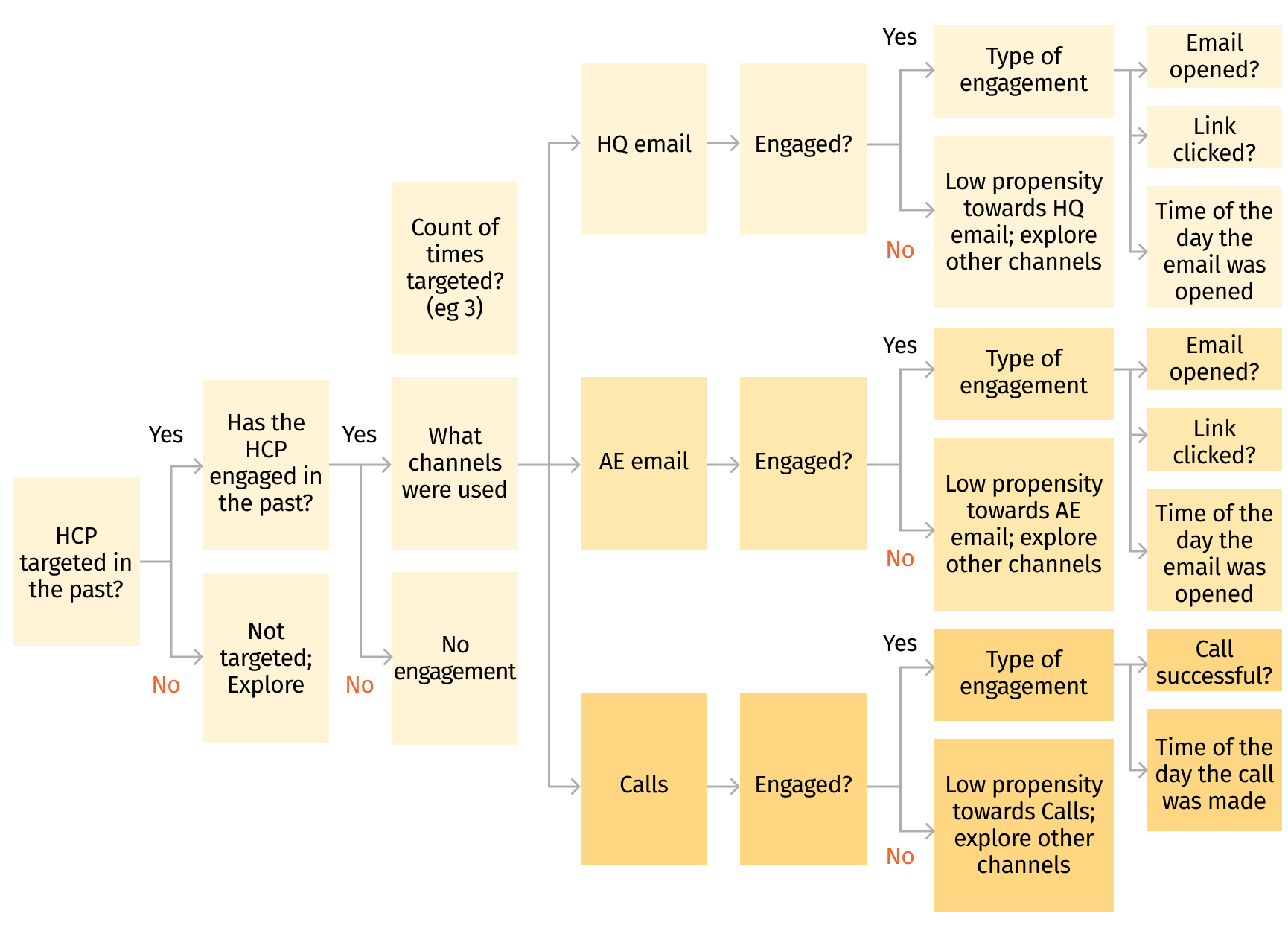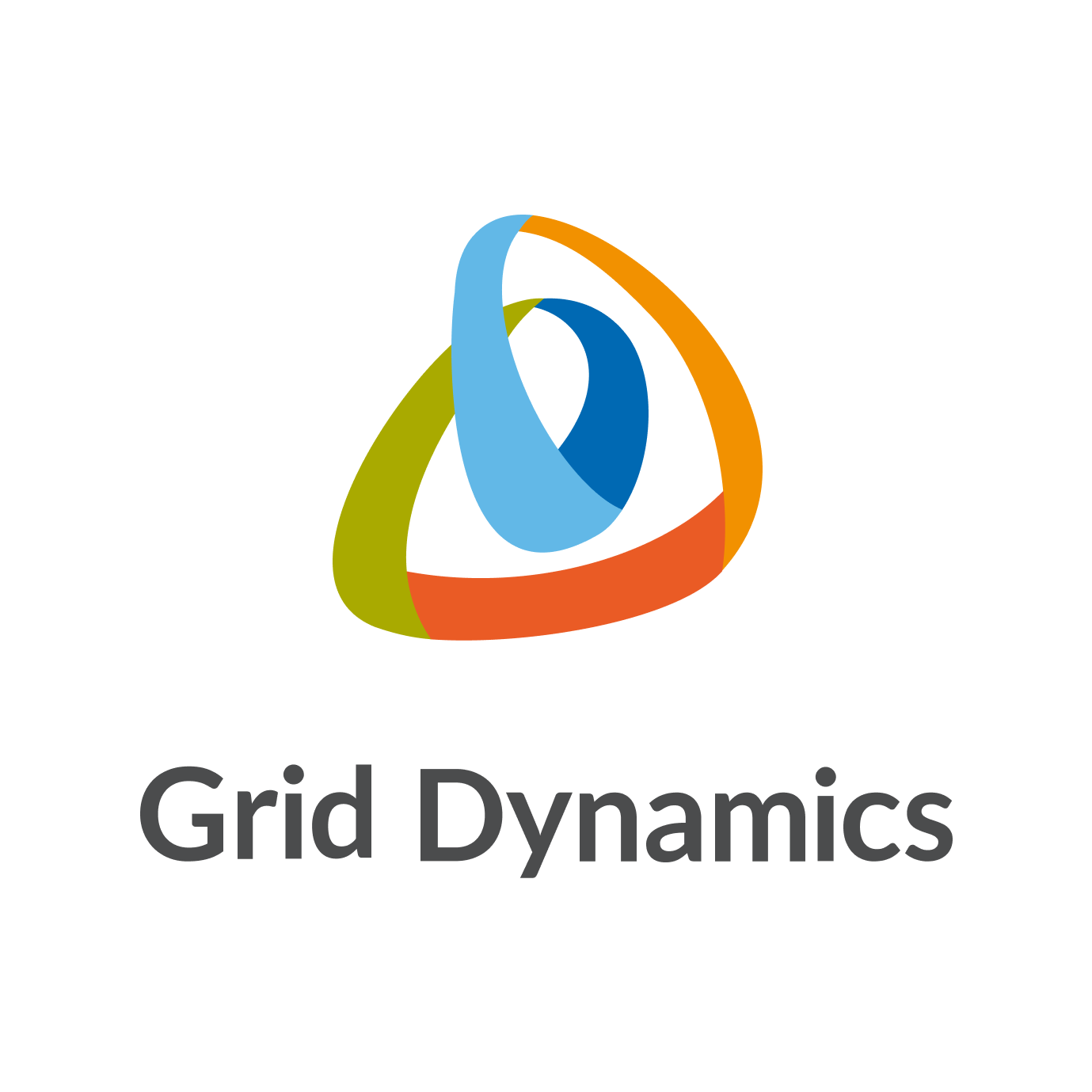
Next Best Action for Commercial Pharma: A Starter Kit
It goes without saying that the driving business goal of any Commercial Pharmaceutical company is to increase drug prescriptions by influencing and educating doctors about the drugs and medication they sell. This marketing process entails Commercial Pharma sales representatives reaching out to doctors and other health care providers (HCPs) to share informational content about various products (drugs), including efficacy details, case studies, and other critical data. However, sales representatives need guidance to streamline this process and ensure that relevant and targeted information is shared with specific HCPs at the right time via the best channels – a major challenge when dealing with many HCPs with different specialties, areas of interest, practice settings, locations, and customer journey preferences. This very problem is what our machine-learning-powered Next Best Action (NBA) Starter Kit intends to solve. Our Next Best Action Starter Kit for Commercial Pharma empowers sales reps with the insight to send the right content at the right time to the right HCP cohorts.
The starter kit focuses on the following aspects of HCP and HCP interaction history to provide recommendations to sales representatives on the best channel to communicate with specific HCPs, as well as the best type of content and time to share it with them.
- HCP profile
- Specialty
- Practice setting
- location
- HCP interaction history
- Omnichannel information
- Approved Email (AE) emails
- Calls
- HQ emails
- Face-to-face (F2F)
- Content type
- Efficacy
- KOL message
- Case study
- Pricing
- Results and testimonials
- Content tags
- Emails open rate
- Click through rate
- Deep link clicks
Recommended Next Best Action use cases for Commercial Pharma
To get started with NBA, the following AI/ML implementations covering three related use cases in the Commercial Pharma industry are considered:
- In an omnichannel setting, an AI/ML model can predict the likelihood of channel engagement by an HCP;
- Given various types of content available from marketing, an AI/ML model can predict the best type of content that HCPs are most likely to engage with;
- An AI/ML model can predict the best time to engage with HCPs, including the best time in the day to send an email, schedule a call, or schedule a face-to-face.
Besides the model and back-end, which exposes the model inferences through an API, there is an easy-to-use user interface (UI) that allows the end user to interact with the models.
The UI has the following capabilities in the form of a user landing page or dashboard:
- The UI enables sales representatives to choose HCP cohorts to engage with based on their chosen specialties
- For chosen cohorts of HCPs, channel engagement likelihood is also listed. For example, if an HCP’s email engagement was higher than call responses and face-to-face meetings in the past, the AI/ML algorithm will suggest emails as the best channel for communication. The explanation behind the decision, as well as the recommendation, is provided so that the rep has context for the recommendation, thus eliminating the black-box nature of recommendations.
- For each HCP in the cohort, the NBA UI displays the right time to send communication, along with the explanation for the suggestions.
Next Best Action model workflow
The NBA Starter Kit consists of three modules:
1. HCP segmentation and targeting
The initial stage in the process is to segment and target HCPs for specific campaigns. To achieve optimum engagement results, sales representatives need to select the HCPs with the highest likelihood of engaging with the specific campaign content by matching HCP demographics with campaign goals. For example, it would be recommended to send clinical information related to ovarian cancer to HCPs who practice in the areas of maternity, gynecology, oncology, and women’s health. In addition, it is essential to target HCPs who are likely to engage with clinical content, such as research papers and the like, to improve conversion rates. It is also crucial to limit the HCP count to a specific and targeted cohort rather than exposing it to the entire database. All of these actions are pre-mapped in the model so that each campaign is targeted to filtered and segmented HCPs with the appropriate specialty and a high likelihood of engagement only.
The NBA model uses a simple filtering-based method for segmenting the HCPs so that next best action recommendations are emphasized. However, based on unique business needs, clustering algorithms such as K-means clustering can be used to find the right number of HCP clusters for targeting.
2. Channel recommendation
The NBA model considers the past three channels used for interactions to make recommendations. In an omnichannel environment, there are generally about 4 to 6 channels considered, however, we focus specifically on HQ email, AE email, Calls, and Face-to-face meetings. Social channels can also be added to the list. Based on interaction history gathered through content tags, email open rates, and deep link click-through rates, HCP engagement affinity is calculated.
The prediction variable, in this case, is HCP engagement rate, and the dependent variable consists of HCP specialty, practice setting, state, past channels used for interactions, and previous engagement rates. The model uses XGboost algorithm to build the recommendation of channels based on the HCP and interactions data.
3. Content recommendation
Just like channel recommendation, the XGboost model calculates the content affinity for each selected HCP based on the data.
A recommendation view that explains the likelihood of channel and content engagement for sales reps to decide to use the recommended actions.
The decision tree below depicts a simple logical flow of recommendations that becomes more complex as we add more features into the model. For simplicity of demonstrating the recommendation, let's consider the following:

NBA Starter Kit frontend features
The NBA solution has an accessible and intuitive frontend consisting of a landing page and recommendation page that sales reps can easily interact with to set up targeted campaigns and receive relevant engagement recommendations.
Landing Page
On the landing page, the sales reps can choose the type of drug intended to be promoted in a campaign. Based on the chosen product type, a cohort of HCPs with the relevant specialty and practice setting, and who have consented to be contacted, will be listed.
Sales representatives can also select the number of HCPs to be targeted. For example, if the number of HCPs to be targeted is 50, then the HCPs with the highest likelihood of engagement will be listed first as targets. Supporting information for why these HCPs were chosen, such as past engagement channels, engagement type, content type consumed, etc, is provided to help reps make better, context-aware decisions.
For each HCPs in the list, a link to the next page with individual channel recommendations is generated. Upon clicking the link, a detailed description of why the actions are suggested is provided.

| HCP Name | Speciality | Practice setting | Engaged in the past? | Past engagement channels | Past engaged content | Current Recommendation |
| HCP1 | pulmonologist | Community Hospital | Yes | F2F | KOL activity | View recommendation |
| HCP2 | pulmonologist | Urgent care | No | HQ Email | White paper | View recommendation |
| HCP3 | pulmonologist | Community Hospital | No | AE Email | Case study | View recommendation |
| HCP4 | pulmonologist | Urgent care | Yes | Call | Promo | View recommendation |
Recommendation Page
Once the sales representative clicks on an individual HCP recommendation link, the best channels, the best time to engage, and the best type of content, along with the explanation of why these actions are recommended, are accessible. Based on the recommendation, sales representatives can then take actions to increase the engagement rate.
Recommendation regarding HCP 1
Based on the previous three interactions, the recommended channel for HCP 1 is face-to-face meetings. Face-to-face interactions have a 100% engagement rate, while emails have a 0% rate of engagement. Therefore, face-to-face communication is recommended as the optimal method of communication.
Based on the previous three interactions, HCP1 has participated in KOL activities but not white papers or promotional activities. This makes this HCP suitable for KOL-related events.
Benefits and business value of NBA recommendations for Commercial Pharma
The NBA Starter Kit for Commercial Pharma leverages machine learning to magnify the power of HCP marketing campaigns, resulting in dramatically improved effectiveness of HCP interactions. The starter kit provides all the necessary tools, data collection, processing, and modeling capabilities to accelerate the development of a recommendation engine out of the box so that your sales reps can get started with targeted campaigns in days rather than months.
Empower sales reps from day one with relevant and explainable next best actions related to channel, timing, and content type for specific HCPs, and watch your sales and marketing operations become more streamlined, effective, and results-oriented.
For more information on added business value and operationalizing NBA, check out our blog series on NBA in Commercial Pharma:
- Operationalizing Next Best Action in Commercial Pharma: A Blueprint
- Next Best Action (NBA) to augment customer engagement in Commercial Pharma
- Designing an objective function for personalization in pharmaceutical marketing
Ready to get started with NBA in your Commercial Pharma enterprise?
Grid Dynamics offers services to plan, design, prototype, integrate, and implement the NBA Starter Kit in the client ecosystem, along with onboarding of batch and streaming data sources, migration of data and platform components from on-premise to the cloud, and implementation of required AI/ML use cases. The typical engagement model looks as follows:

Get in touch with us to speak to an NBA specialist and discuss what will work best for your business environment.
